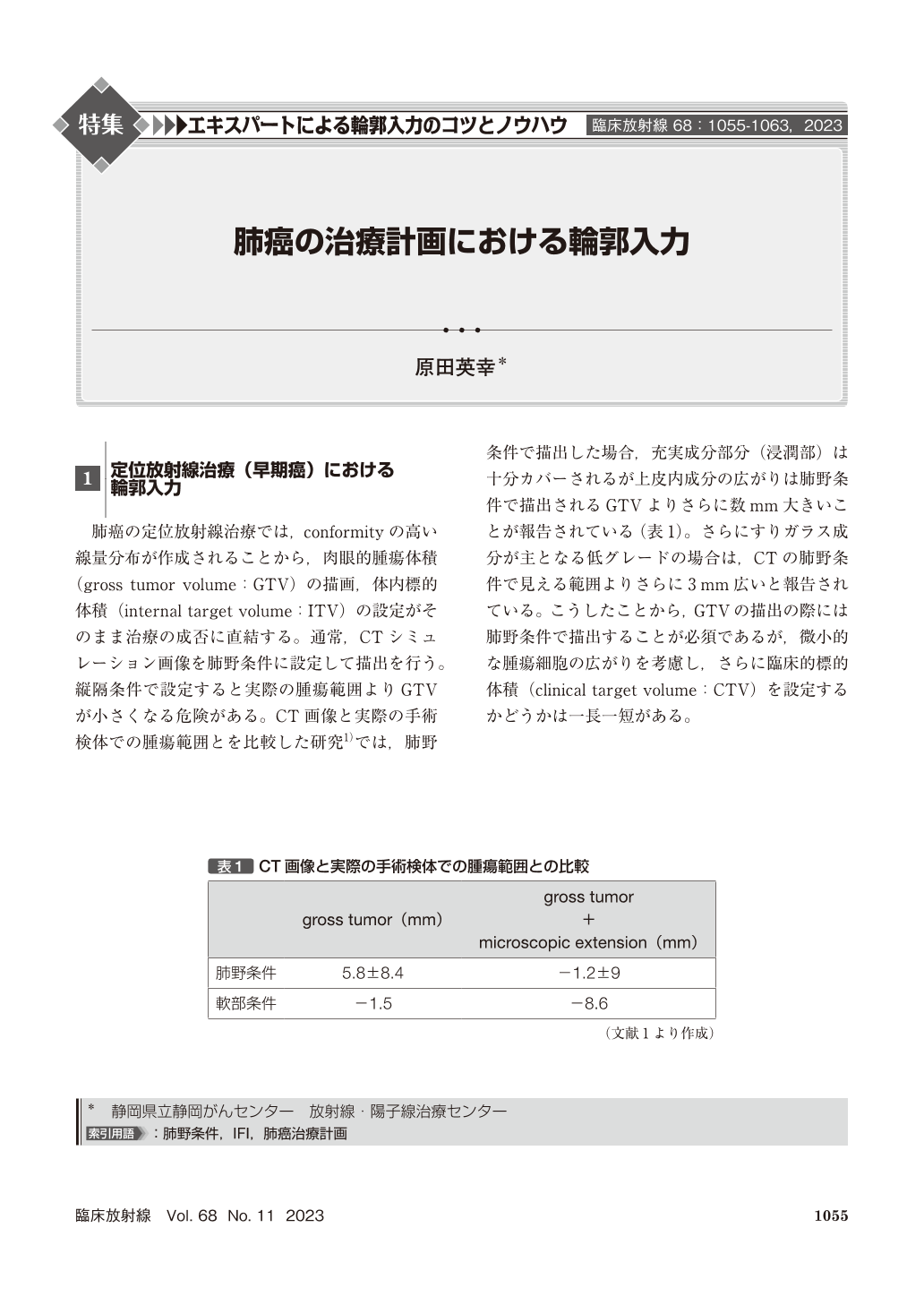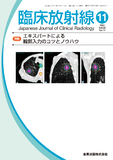Japanese
English
- 有料閲覧
- Abstract 文献概要
- 1ページ目 Look Inside
- 参考文献 Reference
肺癌の定位放射線治療では,conformityの高い線量分布が作成されることから,肉眼的腫瘍体積(gross tumor volume:GTV)の描画,体内標的体積(internal target volume:ITV)の設定がそのまま治療の成否に直結する。通常,CTシミュレーション画像を肺野条件に設定して描出を行う。縦隔条件で設定すると実際の腫瘍範囲よりGTVが小さくなる危険がある。CT画像と実際の手術検体での腫瘍範囲とを比較した研究1)では,肺野条件で描出した場合,充実成分部分(浸潤部)は十分カバーされるが上皮内成分の広がりは肺野条件で描出されるGTVよりさらに数mm大きいことが報告されている(表1)。さらにすりガラス成分が主となる低グレードの場合は,CTの肺野条件で見える範囲よりさらに3mm広いと報告されている。こうしたことから,GTVの描出の際には肺野条件で描出することが必須であるが,微小的な腫瘍細胞の広がりを考慮し,さらに臨床的標的体積(clinical target volume:CTV)を設定するかどうかは一長一短がある。
Tips for contouring in lung cancer treatment planning are: the primary tumor should be delineated in the pulmonary window setting. Especially in well differentiated adenocarcinomas, tumor extension may be larger than that delineated in the pulmonary window setting. The inclusion of lymph nodes in the CTV for locally advanced cancer depends on individual clinical judgment. Recently, FDG-PET and EBUS-TBNA have improved the diagnostic accuracy of mediastinal lymph nodes, and IFI is becoming more widespread. In some cases, FDG-PET and MRI may be useful in treatment planning.

Copyright © 2023, KANEHARA SHUPPAN Co.LTD. All rights reserved.


